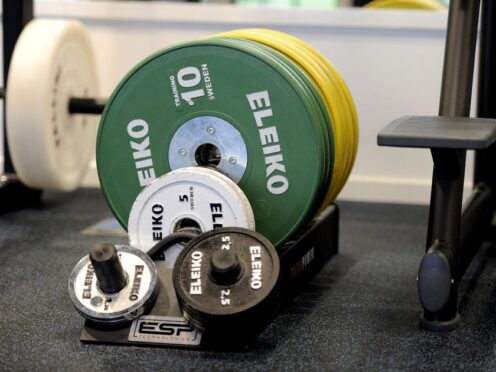Lifting heavy weights around the time of retirement could preserve leg strength into older age, research suggests.
People naturally lose muscle function as they get older, and experts see faltering leg strength as a strong predictor of death in elderly people.
Previous short-term studies have shown that resistance training, which can involve weights, body weight or resistance bands, can help prevent this happening.
New research has explored the long-term effects of a one-year supervised resistance training programme using heavy weights.
For the study, 451 people of retirement age were randomly split to undergo one year of heavy resistance training, one year of moderate-intensity training or one year of no extra exercise on top of their usual activity.
People in the weights group lifted heavy weights three times a week, while those doing moderate intensity training did circuits including body weight exercises and resistance bands three times a week.
Each exercise in the heavy weights group involved three sets of six to 12 repetitions at between 70% and 85% of the maximum weight the person could lift for one repetition.
Bone and muscle strength and levels of body fat were measured at the start of the research and then again after one, two, and four years
At the four-year mark, full results were available for 369 people.
They showed that those in the heavy weights group had maintained their leg strength over time, while those doing no exercise or at moderate intensity had lost strength.
Writing in the journal BMJ Open Sport and Exercise Medicine, the researchers concluded: “In well-functioning older adults at retirement age, one year of heavy resistance training may induce long-lasting beneficial effects by preserving muscle function.”
The researchers found, however, there was no difference among the three groups in leg extensor power, which is the the ability to kick a pedal as hard and as fast as possible; handgrip strength (a measure of overall strength), and lean leg mass (weight minus body fat), with decreases in all of these.
When looking at visceral fat stored internally around organs, levels remained the same in the heavy weights resistance training and moderate intensity exercise groups, but increased in the no-exercise group.
The authors, including from the University of Copenhagen, said people in the study were generally more active (clocking up an average of nearly 10,000 steps a day) than the population as a whole.
But they concluded: “This study provides evidence that resistance training with heavy loads at retirement age can have long-term effects over several years.
“The results, therefore, provide means for practitioners and policy-makers to encourage older individuals to engage in heavy resistance training.”
People at the end of the study were aged 71 on average, and 61% were women.
